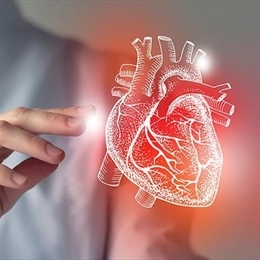Prostate Cancer

Overview
The prostate is a small gland resembling a walnut, which is found as part of the male reproductive system (pelvic). It is located under the bladder and just in front of the rectum or large bowel.
The prostate gland surrounding the beginning of the urinary tract secretes the part of the fluid that forms semen and so plays a role in the delivery of the semen.
Generally in the men above 40, hormonal changes occur related to age and advancing age may cause benign prostate growth. In these benign prostate growths, genetic factors as well as hormones play a role.
Prostate cancer is the most common type of cancer in men. Due to its slow development, it does not give a significant sign, and at the beginning, it is limited to the prostate gland. While some prostate cancers develop slowly, some develop rapidly and can spread to other organs of the body. If prostate cancer can be diagnosed at an early stage without applying outside the prostate gland, the chance of success becomes relatively high.
Risk Factors:
Although the causes of prostate cancer are not entirely known, some risk factors such as genetic predisposition, race, age, and obesity can cause the development of prostate cancer.
However, no accurately proven factor causes prostate cancer, or, in other words, it is not known precisely what causes prostate cancer.
With the effects of risk factors, mutations occur in the cells of the prostate gland, causing abnormal cells to appear. These cells reproduce faster than normal cells and survive when the other cells die. So, abnormal cells increasing in number rapidly form a bulk called a tumor. These abnormal cells can spread to neighboring and distant tissues and organs using lymph nodes and blood circulation.
Since prostate cancer is at the top of the most common types of cancer among men, men need to be routinely examined and checked, especially in the middle ages.
Symptoms:
The amount of growth in the gland determines the symptoms of prostate cancer to a large extent. In the early stage, patients do not have any signs. Its symptoms can be confused with "benign prostate growth." When the growth of the gland progresses and the advanced stages of the disease are reached, signs and symptoms appear that cause distress in daily life.
Among the most common causes of prostate cancer are;
Blood in urine or semen
Difficulty voiding, weak urine stream
Urinary incontinence
Difficulty in urinating and pain.
Anemia, fatigue
Erectile dysfunctions,
Bone pains.
Prevention:
As in all other cancer types, prevention of prostate cancer is also to remove manageable risks or to reduce them to a minimum.
Since there is no known factor that causes prostate cancer, to prevent prostate cancer, you should live a healthy life from all perspectives. For this purpose, to protect your ideal body weight, a vegetable, and fruit-rich, healthy diet, exercise regularly, avoid a sedentary life, and visit your doctor at regular intervals to manage the risks applied to you are among to do.
Your doctor may ask you to visit them regularly for screening. In prostate cancer, examination of the prostate gland by finger at regular intervals and analysis of a substance called prostate-specific antigen in your blood that shows the risk of prostate cancer helps to diagnose prostate cancer in the early stage. As in all other cancer types, as in prostate cancer, early diagnosis and treatment increase the chance of life.
Diagnosis:
If a finding that may lead to cancer suspect is determined in the examination of the prostate gland by finger or in a PSA test, your doctor may require advanced tests.
First, information about the prostate gland is collected by using imaging methods such as ultrasound and multiparametric MR. If the prostate cancer suspect cannot be eliminated, a biopsy specimen from the prostate gland is removed to establish a definite diagnosis. For this purpose, a thin needle is inserted into the prostate gland, and tissue and cell samples of the gland are collected and analyzed. A biopsy specimen, if there is prostate cancer, to make a definite diagnosis and to determine the growth and spread tendency of cancer cells. For this purpose, pathologists use the Gleason Scoring System. With this scoring system, the tumor is given a score between 2 and 10. While 2 shows low aggressiveness, 10 is the highest aggressiveness level.
Treatment:
The most appropriate treatment method is determined after the collection of all information related to the patient and tumor. In the assessment of the alternative treatments, not only benefits but also side effects and risks are considered.
The identification stage and extent of prostate cancer play a significant role in determining the treatment method to be applied.
Cancer stages are typically represented using Roman numerals from I to IV. Stage IV is considered the final and most advanced stage of cancer. The treatment approach is customized for each individual, taking into account the stage of cancer, the patient's age, overall health status, and personal preferences.
Your doctor defines the treatment level according to the progression level of the disease, your general health condition, and the severity of the symptoms. Active follow-up may be recommended if the growth in the prostate gland is thought to be low risk for prostate cancer. There will be no intervention, and healthy lifestyle recommendations will be advised (healthy nutrition, reaching and maintaining ideal body weight, regular exercise, avoiding alcohol, and particular recommendations for you).
Except this, before applying surgical methods, hormone therapy, chemotherapy, radiotherapy, etc., are applied according to the condition of the disease. Treatment methods for prostate cancer include chemotherapy, target-oriented therapy, radiotherapy, and surgery. While these treatments are used to cure tumors in advanced stages, they can be used to increase the quality of life and to ease the severity of the symptoms. Moreover, the treatment options can be used together or alone.
Chemotherapy
Chemotherapy employs medications to treat cancer by targeting and destroying cancerous cells. These medications can be delivered either through intravenous infusion or orally. When administered intravenously, a slender tube known as a catheter is placed into a large vein, through which the chemotherapy medication is administered over the course of the treatment.
One or more chemotherapy medicines may be administered according to the response of the cancer to the treatment and type of cancer. After chemotherapy is given for a certain period, a treatment break is given. After the completion of this defined "break" period, treatment resumes. Each of these periods is called a cycle. In early-stage cancers, both to develop surgical results and to increase survival rate, chemotherapy can be started before the surgery or with surgery.
Side effects of chemotherapy are secondary to the chemotherapeutic agent and dose. The most common side effects seen in chemotherapy drugs include malaise, nausea, vomiting, mouth sores, hair loss, and inflammation in the digestive system. Your doctor will also treat side effects caused by chemotherapy. In case the side effects become severe enough to threaten your health, your doctor may advise you to suspend the treatment or to take another chemotherapy medicine.
Hormone therapy
Since the testosterone hormone plays a significant role in the growth of prostate cells, drugs may stop testosterone production in the body or decrease the testosterone level; testicles can be removed (orchiectomy).
Radiotherapy
Radiation therapy aims to kill cancer cells by using high-powered energy beams. If the radiation source is out of the body and beams are directed to the cancer, this treatment is called external radiotherapy. On the other hand, if the radioactive agent is put into the area where cancer is present by a needle or catheter, the method is called internal radiotherapy (brachytherapy)
Although radiation therapy can also be used as first-order therapy for cancer, generally, it is used to kill cells that are not removed by surgery. In first-order treatment, mostly radiotherapy, and chemotherapy are administered together, and this treatment is also known as chemoradiotherapy.
The side effects of radiotherapy take place in an extensive range depending on the body region where the radioactive rays are transmitted. Urological symptoms such as pain while urinating, needing to urinate more often, and needing to rush to the toilet, as well as sexual dysfunctions such as erectile dysfunction and rectal problems such as pain or soft stools during evacuating the bowel may also be encountered. Your doctor will explain the risks that apply to you.
Surgery:
In stages where cancer is limited to the prostate gland, the most appropriate treatment is surgical removal of the prostate gland and surrounding tissue and lymph nodes. In this surgery called radical prostatectomy, open method, laparoscopy, or robotic method can be used.
Open radical prostatectomy:
Your doctor, to remove the prostate gland, will make an incision between the scrotum and the anus on the anterior wall of the abdomen in the light of the pre-operative examinations. Additionally, neighboring lymph nodes to the prostate gland are also removed. Depending on the findings monitored during surgery, the same incision may be used, or a separate incision may be required to remove the lymph nodes.
Laparoscopic prostatectomy:
Small incisions are made on the skin of the abdomen. From one of these incisions, a tube with a camera on the tip and with a light source is inserted, while from the other incision, laparoscopic surgical instruments to be used during surgery are inserted into the abdomen. The prostate gland and lymph nodes are removed.
Robotic Surgery:
After the small incisions were made on the skin of the abdomen, the camera and the surgical instruments were inserted into the stomach, and the surgeon performed the surgery by using robotic arms.
Pelvic lymphadenectomy:
In the prostate cancer cases, in addition to the prostate gland removal, it is routinely performed. The purpose is to remove the lymph nodes of the pelvic area. By analyzing lymph nodes, the spread and aggressiveness of the cancer are examined.
Cryosurgery:
This method, which can be applied in some centers, aims to kill some healthy cells and tissues around the prostate gland and cancer cells by cooling and heating the prostate gland rapidly by inserting tiny needles into the prostate gland with the help of ultrasound.
Your doctor will decide which method is proper for you according to your general health condition and your age and then inform you. Radical prostatectomy surgery carries risks of urinary incontinence and erectile dysfunction. Your doctor will answer all of your questions regarding the complications you may encounter in detail. Asking your questions about the treatment of prostate cancer, post-treatment life, rehabilitation, pain management, clinical studies, and prostate cancer to your doctor will help you to take part in therapy with more information and will ease your concerns.




























